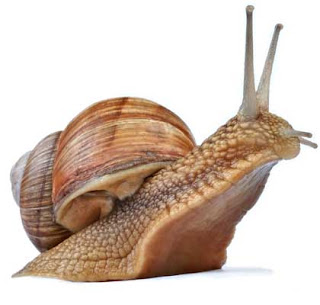All time favourite legendary football player and a leader of the brazilian national team
Legendary football player who lead his country to World Cup success
Edson Arantes do Nascimento known as Pelé.s a retired Brazilian professional footballer who played as a forward. He is widely regarded as the greatest football player of all time. Pelé has also been known for connecting the phrase "The Beautiful Game" with football. In 1999, he was voted World Player of the Century by the International Federation of Football History & Statistics (IFFHS). That year,France Football asked their former Ballon d'Or winners to choose the Football Player of the Century; they selected Pelé. In 1999, Pelé was elected Athlete of the Century by the IOC. That year, Time named him in their list of 100 most influential people of the 20th century. In 2013, he received the FIFA Ballon d'Or Prix d'Honneur in recognition of his career and achievements as a global icon of football.
Pelé was born in Três Corações, Minas Gerais, Brazil, the son of Fluminense footballer Dondinho (born João Ramos do Nascimento) and Celeste Arantes. He was the elder of two siblings. He was named after the American inventor Thomas Edison.His parents decided to remove the "i" and call him "Edson", but there was a mistake on the birth certificate, leading many documents to show his name as "Edison", not "Edson", as he is called. He was originally nicknamed Dico by his family. He received the nickname "Pelé" during his school days, when it is claimed he was given it because of his pronunciation of the name of his favorite player, local Vasco da Gama goalkeeper Bilé, which he misspoke but the more he complained the more it stuck. In his autobiography, Pelé stated he had no idea what the name means, nor did his old friends. Apart from the assertion that the name is derived from that of Bilé, and that it is Hebrew for "miracle" the word has no known meaning in Portuguese.
1958 World Cup
Pelé arrived in Sweden sidelined by a knee injury but on his return from the treatment room, his colleagues closed ranks and insisted upon his selection.His first match was against the USSR in the third match of the first round of the 1958 FIFA World Cup, where he gave the assist to Vavá's second goal. He was the youngest player of that tournament, and at the time the youngest ever to play in the World Cup.He scored his first World Cup goal against Wales in quarter-finals, the only goal of the match, to help Brazil advance to semifinals, while becoming the youngest ever World Cup goalscorer at 17 years and 239 days. Against France in the semifinal, Brazil were leading 2–1 at halftime, and then Pelé scored a hat-trick, becoming the youngest in World Cup history to do so.
On 29 June 1958 Pelé became the youngest player to play in a World Cup final match at 17 years and 249 days. He scored two goals in that final as Brazil beat Sweden 5–2 in the capital of Stockholm. His first goal where he flicked the ball over a defender before volleying into the corner of the net, was selected as one of the best goals in the history of the World Cup.[49] Following Pelé's second goal, Swedish player Sigvard Parling would later comment; "When Pelé scored the fifth goal in that Final, I have to be honest and say I felt like applauding".[50] When the match ended, Pelé passed out on the field, and had to be attended by the medical staff.[14] He then recovered, and was compelled by the victory to weep as he was being congratulated by his teammates. He finished the tournament with six goals in four matches played, tied for second place, behind record-breaker Just Fontaine, and was named best young player of the tournament.[51]
It was in the 1958 World Cup that Pelé began wearing a jersey with number 10. Recently it has become known that the event was the result of disorganization: the leaders did not send the shirt numbers of players and it was up to FIFA to choose the number 10 shirt to Pele who was a substitute on the occasion. The press proclaimed Pelé the greatest revelation of the 1958 World Cup, and he was also retroactively given the Silver Ball as the second best player of the tournament, behind Didi.
PERSONAL LIFE OF PELE
On 21 February 1966, Pelé married Rosemeri dos Reis Cholbi.[103] They had two daughters and one son: Kelly Cristina (born 13 January 1967), who married Dr. Arthur DeLuca, Jennifer (b. 1978), and their son Edson ("Edinho", b. 27 August 1970). The couple divorced in 1982.[104] In 1977, Brazilian media reported that Pelé had his right kidney removed.[105]
From 1981 to 1986, Pelé was romantically linked with the model Xuxa, and was seen as influential move in launching her career. She was 17 when they started dating.[106] In April 1994, Pelé married psychologist and gospel singer Assíria Lemos Seixas, who gave birth on 28 September 1996 to twins Joshua and Celeste through fertility treatments. The couple divorced in 2008
After football
n 1995, Brazilian President Fernando Henrique Cardoso appointed Pelé to the position of Extraordinary Minister for Sport, and he was also appointed a UNESCO Goodwill Ambassador. During this time he proposed legislation to reduce corruption in Brazilian football, which became known as the "Pelé law." Pelé left his position in 2001 after he was accused of involvement in a corruption scandal, although nothing was proven, and it was denied by UNICEF. In 1997, he received an honoraryknighthood from Queen Elizabeth II at a ceremony in Buckingham Palace. Pelé also helped inaugurate the 2006 FIFA World Cup finals, alongside supermodel Claudia Schiffer.







Comments
Post a Comment